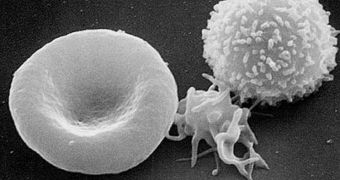With funds from the Canadian Institutes of Health Research, experts at the University of British Columbia (UBC) recently managed to get some new insight into the mechanisms involved in the activation of an important group of immune cells called T cells, or T lymphocytes.
Lymphocytes are white blood cells that play a critically important role in cell-mediated immunity. As such, they are involved in the way the human body responds to organ transplants and immunodeficiency therapies, such as the ones administered to HIV patients.
Usually, T-cells are responsible for finding and killing viruses, bacteria, and other invading pathogens. However, they can also have negative effects, such as for example participating in the rejection of newly-transplanted organs.
As such, understanding how they work in more detail holds great promise for improving the outcome of transplant surgeries. For many years, scientists have been trying to figure out how these cells activate, but it was only during the new study that the mystery was cracked.
The mechanism that makes T lymphocytes spring into action and proliferate is now known, the team reports in this month's online issue of the esteemed medical journal immunity. The work could help people suffering from cancer and HIV.
This new pathway provides a new target for future or existing drugs against HIV/AIDS and multiple types of cancer, the UBC team argues. The lead researcher on this investigation was Michael Smith Laboratories professor Wilfred Jefferies.
Following the same line of thought, it could be possible to fine-tune drugs to such an extent that they prevent T cells from fighting against implant, while at the same time inhibiting the immune system from attacking healthy tissue, which is what happens in auto-immune diseases.
The group identified a specific calcium channel as responsible for the activation of T lymphocytes. Similar channels are involved in controlling muscle contractions and facilitating the transmission of electrical impulses through neural networks.
“Other types of calcium channels expressed in neurons have been used as effective targets for the identification of new drugs that manage pain, so it’s not much of a leap at this point to target this particular channel for a different purpose – to either enhance or inhibit a person’s T-cell response,” Jefferies explains.
The expert holds appointments in the Departments of Microbiology and Immunology, Medical Genetics and Zoology at the University, and is also a member of the Biomedical Research Center and the Center for Blood Research at UBC.
Colleagues from the Oxford University and the University of Calgary were also involved in the study.

 14 DAY TRIAL //
14 DAY TRIAL //